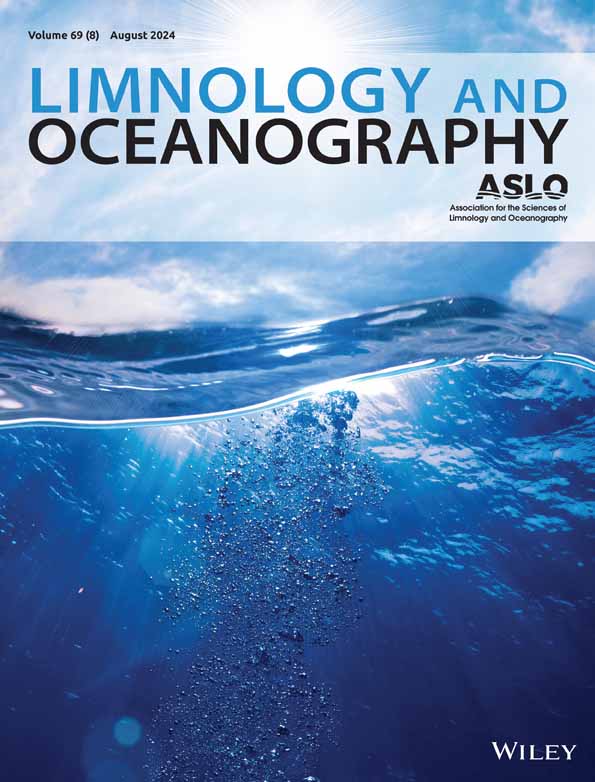A temperature tipping point in hypoxic zone size
IF 3.8
1区 地球科学
Q1 LIMNOLOGY
引用次数: 0
Abstract
Temperature increases will have ubiquitous effects on aquatic food webs, from microbes to consumers, and affect the quality and quantity of carbon flows within and between water layers. A decline in the biological pump moving carbon from surface to lower layers is anticipated. We reviewed 37 years of data on hypoxic zone size and water quality in the northern Gulf of Mexico to determine if air and bottom water temperature increases (0.5°C decade缺氧区面积的温度临界点
温度升高将对水生食物网(从微生物到消费者)产生无处不在的影响,并影响水层内部和水层之间碳流的质量和数量。预计从表层向低层输送碳的生物泵将会减少。我们回顾了墨西哥湾北部缺氧区面积和水质的 37 年数据,以确定空气和底层水温的上升(0.5°C 十年-1)是否与缺氧区面积的变化有显著关系。自制定国家缺氧行动计划以缩小缺氧区面积以来的 24 年中,重要河流的水质没有明显下降。从 2000 年到 2023 年,密西西比河每 1000 公吨硝酸盐负荷的缺氧平方公里比率的变化揭示了海洋变暖导致的缺氧区面积的临界点。与物理因素的变化相比,随温度变化而变化的生物因素,如外温层生长率、浮游动物的捕食、细胞下沉率以及硅藻对硅或氮的固着,显然对近期缺氧区面积的影响更为重要。这种临界点可能与同样变暖和富营养化的沿岸水域相同,变暖可能会导致缺氧(< 2 mgO2 L-1)。在这种情况下,随着沿岸水域进一步变暖、沿海风暴和飓风频率增加以及流域内土地利用随 着气候变化而改变,缺氧和食物网模型假定营养盐负荷、比例和食物网将处于静态等 衡状态。
本文章由计算机程序翻译,如有差异,请以英文原文为准。
求助全文
约1分钟内获得全文
求助全文
来源期刊

Limnology and Oceanography
地学-海洋学
CiteScore
8.80
自引率
6.70%
发文量
254
审稿时长
3 months
期刊介绍:
Limnology and Oceanography (L&O; print ISSN 0024-3590, online ISSN 1939-5590) publishes original articles, including scholarly reviews, about all aspects of limnology and oceanography. The journal''s unifying theme is the understanding of aquatic systems. Submissions are judged on the originality of their data, interpretations, and ideas, and on the degree to which they can be generalized beyond the particular aquatic system examined. Laboratory and modeling studies must demonstrate relevance to field environments; typically this means that they are bolstered by substantial "real-world" data. Few purely theoretical or purely empirical papers are accepted for review.
 求助内容:
求助内容: 应助结果提醒方式:
应助结果提醒方式:


